spacecraft
Latest
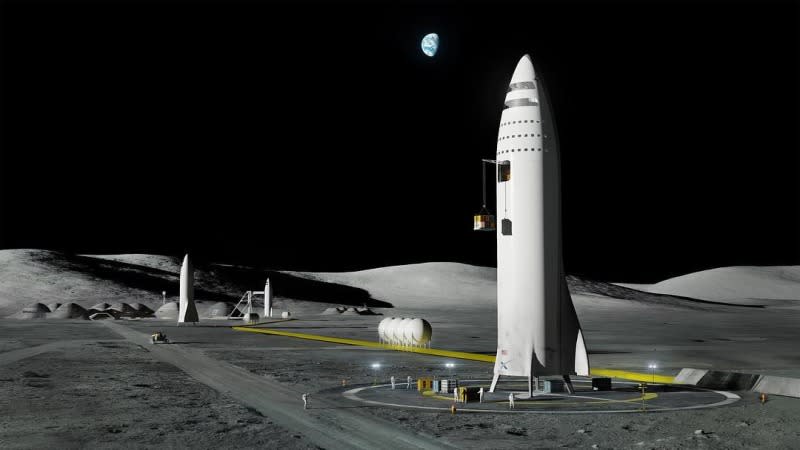
SpaceX aims to test its Mars rocket system in first half of 2019
You might not have to wait long to see SpaceX's BFR rocket system in action ... maybe. In a talk at SXSW, Elon Musk said he expected the spacecraft's first "short up-and-down flights" by the first half of 2019. He was quick to hedge his claim, noting that his timelines tend to be "optimistic" (remember how Falcon Heavy was supposed to launch in 2013?), but this at least gives you a timeframe. Test flights couldn't place too much later when the goal is to send cargo missions to Mars by 2022.

New Horizons probe captures images at record distance from Earth
Voyager 1 has held the distance record for a captured image for the past 27 years thanks to its legendary "Pale Blue Dot" photo (3.75 billion miles away from Earth), but that milestone just got smashed. NASA's New Horizons probe took pictures of Kuiper Belt objects at a distance of over 3.79 billion miles from our cosmic home on December 5th. They weren't technically the first images to break the record, though -- an image of the "Wishing Well" star cluster from two hours earlier (below) has that honor.
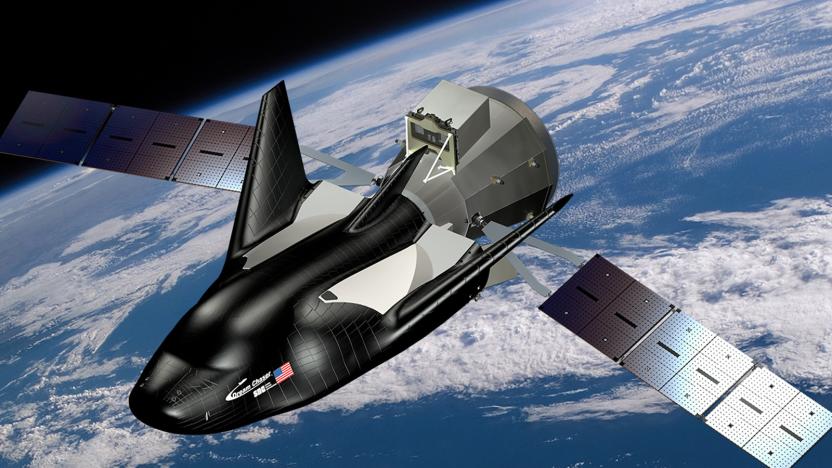
Dream Chaser's first ISS resupply mission launches in late 2020
After years of testing, Sierra Nevada's Dream Chaser cargo spacecraft has a launch window. NASA has given the go-ahead to the vehicle's first mission, which is now slated for late 2020. Appropriately, it's a straightforward resupply trip for the International Space Station. The company received the all-clear after hitting a slew of key NASA-approved design milestones.

A portrait of Earth and the Moon from 3 million miles away
Sometimes you need to step back to see the big picture, and if your subjects are 249,000 miles apart, you need to step waaay back. Luckily, the spacecraft OSIRIS-REx is moving rapidly away from us and was recently just in the right position, around 3.1 million miles away, so it trained its MapCam instrument towards its former home and captured this poignant portrait of the Earth and the Moon.

Sierra Nevada spacecraft completes first test flight in 4 years
If Sierra Nevada is going to fulfill supply missions for the International Space Station and the UN, it'll have to prove that its Dream Chaser spacecraft is ready to fly... and it just took a big step in that direction. The company has revealed that Dream Chaser completed a glide test flight on November 11th, launching from a helicopter and landing at California's Edwards Air Force Base. Notably, it's this vehicle's first flight in 4 years, and its first successful landing demonstration -- when this ship last flew in 2013, stuck landing gear forced a rough touchdown.
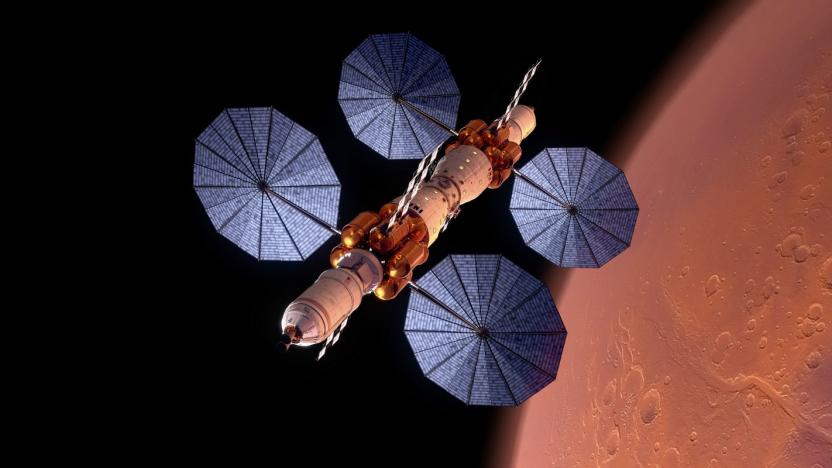
Lockheed Martin unveils Mars space station and surface lander
Elon Musk wasn't the only one dishing new details on a mission to Mars at the International Astronautical Congress in Adelaide, Australia. Lockheed Martin, which too plans to send humans to the Red Planet in the next decade, also dropped a bunch of new info about its ambitious project. The defense and aerospace company is currently building the command module for NASA's Orion spacecraft. The vessel will eventually make the trip to Mars carrying four astronauts, but it won't be alone. The shuttle will be attached to Lockheed Martin's Mars Base Camp (MBC) orbiting mission. And, on Thursday, the company laid out the design of the larger spacecraft, designated to carry crew, supplies, and scientific equipment. Along with a sleek Mars lander concept capable of carrying astronauts to the planet's surface from orbit.
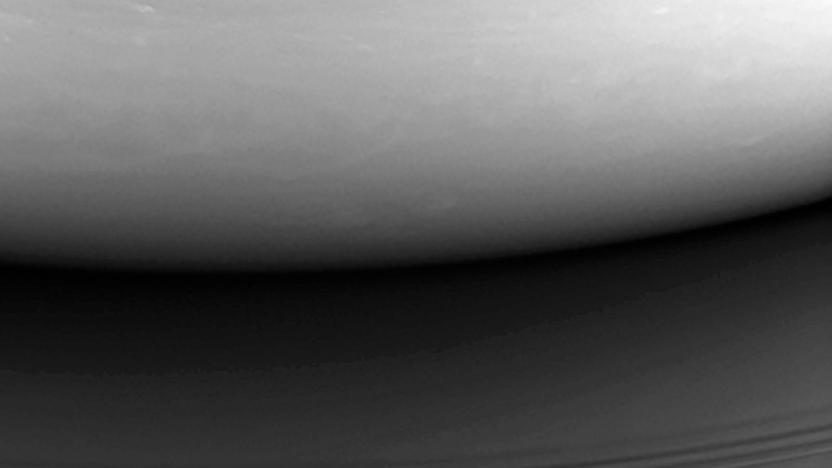
Cassini mission ends with final plunge into Saturn
At around 7:31 AM eastern time, the Cassini-Huygens spacecraft disintegrated and plunged into Saturn, becoming the only man-made object ever to touch our solar system's second largest planet. "The signal from the spacecraft is gone and within the next 45 seconds, so will be the spacecraft," said NASA JPL Cassini program manager Earl Maize. "This has been an incredible mission, an incredible spacecraft, and you're all an incredible team."

Hypersonic aircraft are more realistic thanks to a ceramic coating
There are a few reasons why you aren't flying across the country in hypersonic aircraft, but the simplest of them is heat: when you travel at speeds over Mach 5, the ultra-high temperatures (around 3,600F to 5,400F) strip layers from metal. How do you protect a vehicle when even the toughest ceramic tiles can't handle those conditions? A team of British and Chinese researchers might have the answer. They've engineered a carbide-based ceramic coating that's about 12 times more effective than current ceramics, making hypersonic aircraft more realistic.
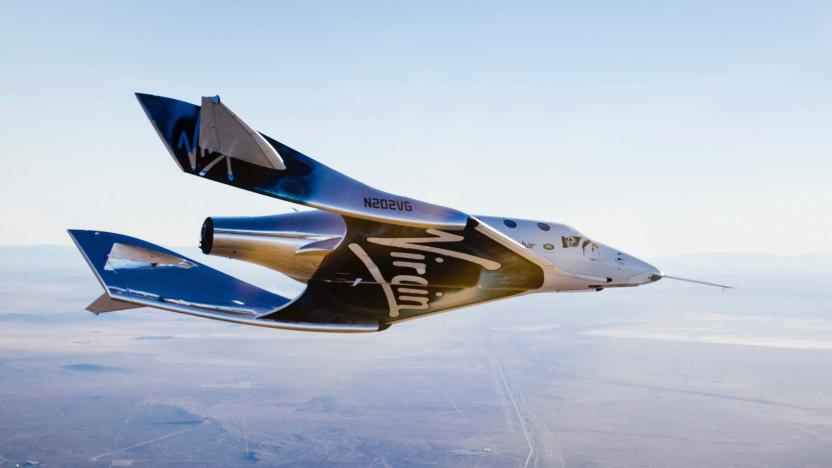
Virgin Galactic to conduct first powered spaceship tests in 3 years
Virgin Galactic is determined to put its private space travel plans back on track following its tragic 2014 crash. Richard Branson tells Bloomberg that the company is about to resume powered test flights for the first time in close to 3 years, ending a series of glide-only tests that began in December. The company will fly in the atmosphere every 3 weeks, and plans to return to space (or at least, the edge of space) by November or December.
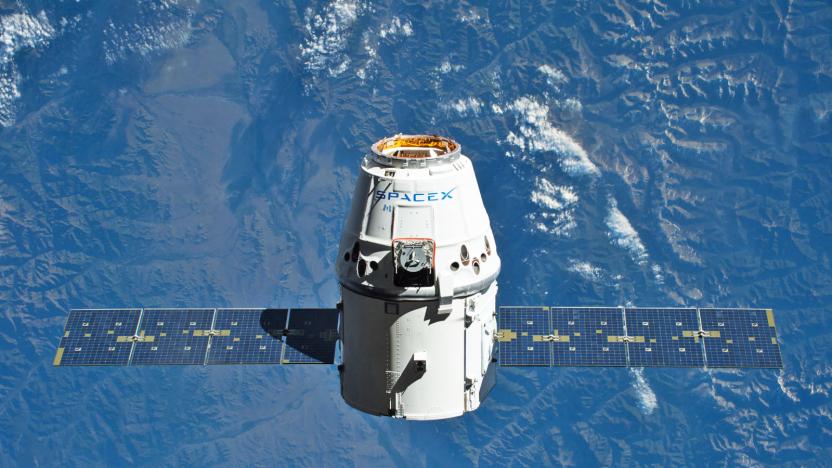
SpaceX's capsule 're-flight' is a space travel milestone
SpaceX just took one step closer to making reusable private spacecraft seem entirely ordinary. The company has confirmed that its previously used Dragon capsule splashed down on the morning of July 3rd, making it the first commercial spacecraft to re-fly to and from the International Space Station. There wasn't a lot of drama involved (the biggest challenge was getting the vessel into orbit), but that's arguably the point -- it's supposed to be a non-event.

ICYMI: A prosthetic hand with two senses
Today on In Case You Missed It: We get our first close-up look at Saturn's rings thanks to the Cassini spacecraft -- which just completed the first of its twenty-two passes through the planets' famed hoops. NASA stitched together the images from the craft to give us Earthlings an incredible first-person (first-spacecraft?) point-of-view of the recent dive, which began at the north pole of the planet and moved down its side. The imaging team working on Cassini's trips expects to get even better data from the subsequent trips, which will gather information on Saturn's gravity and magnetic fields.
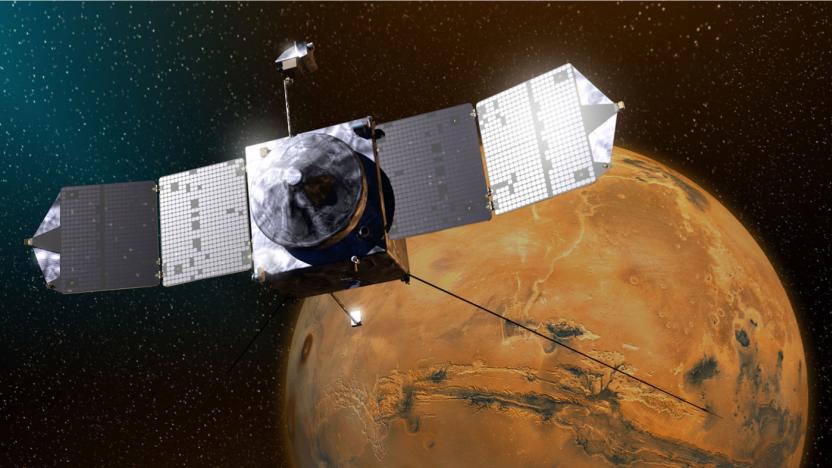
NASA prevents probe's collision with Martian moon Phobos
NASA's MAVEN spacecraft and Phobos would have arrived at an intersection in their orbits within seven seconds of each other on March 6th. Phobos is the larger of the two Martian moons, and MAVEN would most likely crash into it if the space agency left it on its own. Thankfully, the mission's scientists have been keeping a close eye on all the celestial bodies that cross the spacecraft's path. They were able to predict the scenario in advance and were able to perform the spacecraft's first collision avoidance maneuver to prevent the disaster from happening.

Japan's space junk collection experiment ends in failure
Well that's disappointing. On January 27th, Japan's space agency (JAXA) successfully launched the Kounotori 6 spacecraft to the ISS. It was supposed to test a novel method of dragging space debris out of orbit however a technical issue prevented the spacecraft from carrying out that test before its fiery death in Earth's atmosphere on Monday morning.
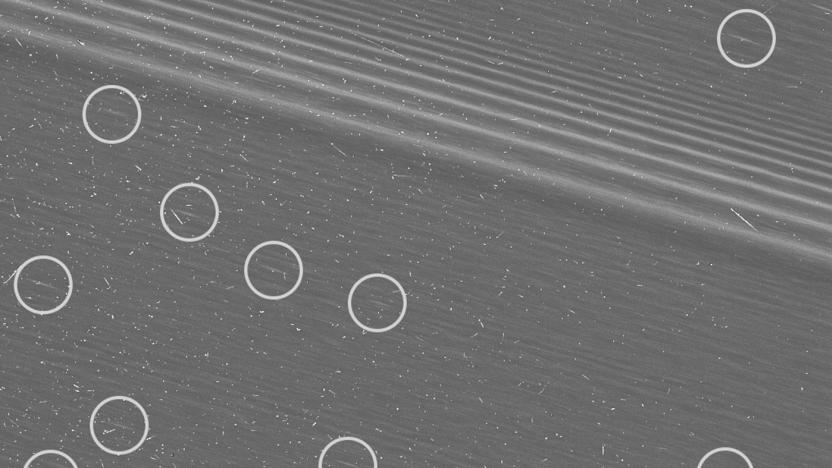
Cassini captures close-up views of Saturn's rings
NASA has released high-resolution close-up images of Saturn's outermost rings captured by Cassini as part of its penultimate mission. The spacecraft has been diving in and out of the rings every week since November, taking images that show features as small as 550 meters or around the same size the world's tallest buildings. That might not sound small from our perspective, but don't forget Cassini is taking photos of another planet. In the image above, the encircled parts show features called "propellers," which are bright disturbances caused by the gravity of moonlets embedded in the ring.

ICYMI: Pinchers more powerful than dog jaws
try{document.getElementById("aol-cms-player-1").style.display="none";}catch(e){}Today on In Case You Missed It: Scientists looking into the strength of the pinchers in Coconut crabs found that they exert a force of 3,300 Newtons, which is more than the average dog's jaw and far stronger than any other crustacean. Meanwhile, NASA's plan for the Cassini spacecraft involves getting closer and closer to Saturn's rings as it uses the last of its fuel reserves, then making a fiery plunge into its atmosphere in April of next year. If you're feeling brave, feel free to watch the video of the bike going across the top of a dam, although a personal favorite is the salmon launcher. As always, please share any interesting tech or science videos you find by using the #ICYMI hashtag on Twitter for @mskerryd.

It's the beginning of the end for NASA's Cassini spacecraft
Cassini is officially, irrevocably in its final year of existence. The NASA spacecraft has been capturing lovely images and collecting samples of Saturn and its orbiting objects since 2004, but today Cassini enters the final phase of its mission. Between November 30th and April 22nd, Cassini will circle Saturn's poles, diving between its outermost rings once every seven days, a total of 20 times (as shown above). Its final mission is also a first -- Cassini will observe unexplored areas of Saturn's rings, including the collection of small moons orbiting near their outer edges.
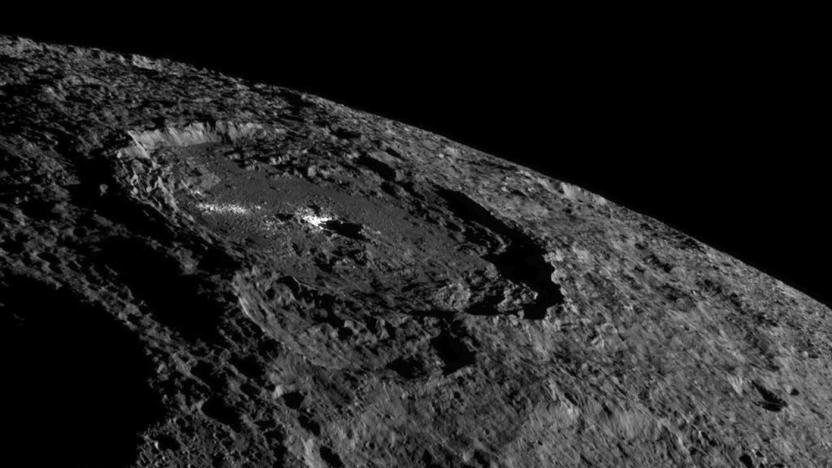
NASA says Ceres' brightest crater is made of salt
The scientists in charge of NASA's Dawn spacecraft has released more high-res images of Ceres, along with information that sheds more light on what it's made of. One of the new images is another close-up of its famous Occator Crater taken from a different angle on October 16th, 920 miles above the dwarf planet. Occator is Ceres' brightest spot, and according to the Dawn team's latest research, it's because the crater is made of salt. The team believes the impact that formed the crater forced a briny liquid to seep out from underground. It froze then immediately turned into vapor, leaving a blanket of salt behind.

Juno probe makes the closest-ever encounter with Jupiter
If you thought the Juno probe's first photos of Jupiter were tantalizing, you're in for a treat. The spacecraft just completed the closest approach it will take during its primary mission around the gas giant, passing a mere 2,600 miles above the surface early on the 26th. It's the closest any vehicle has been to Jupiter, and NASA researchers already believe that they'll discover new things about the Jovian world once they process the data (which could take "some time," NASA warns). And of course, it's a prime photographic opportunity. You'll not only get the sharpest-ever photos of Jupiter's atmosphere when photos arrive late next week, but the first good look at the planet's poles.
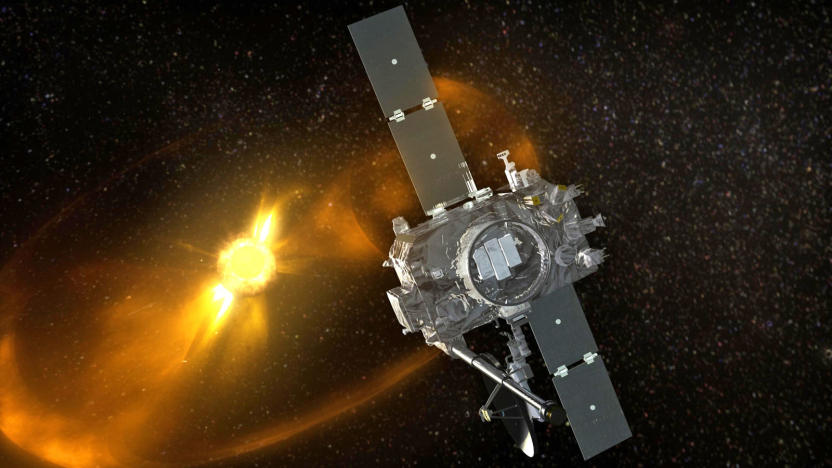
NASA regains contact with spacecraft after a 2-year silence
When mission crews lose contact with a spacecraft or lander for a significant amount of time, that's usually a bad sign... ask the European Space Agency if you want to know why. However, NASA just showed why you shouldn't always give up hope. It reestablished contact with STEREO-B, one of two probes studying the Sun and solar weather, after nearly two years of communications silence. The team had lost its connection during a test of the ship's command lost timer on October 1st, 2014, but kept trying numerous recovery strategies (most recently using the Deep Space Network) until they heard back early on August 21st.
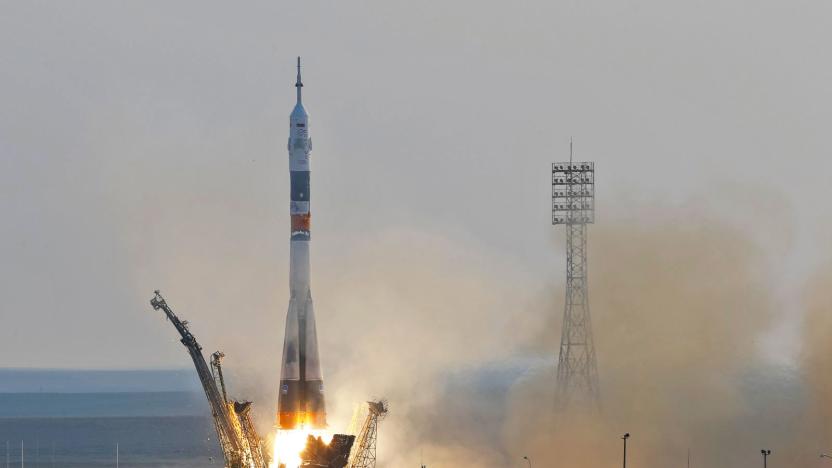
Super-resilient ceramic could be the key to future spacecraft
Vehicles like the Space Shuttle have used ceramic tiles to thwart heat during reentry, but it has its limits. It can only get so hot, which can force you to use different materials -- and you can forget about using near an engine. Russia's Tomsk State University wants to change that. It's developing a ceramic whose multiple layers (based on hafnium carbide, zirconium diboride and zirconium oxide) can survive temperatures over 5,400F (3,000C). Even the best metal alloys can't usually handle more than 3,600F (2,000C), the university says.







